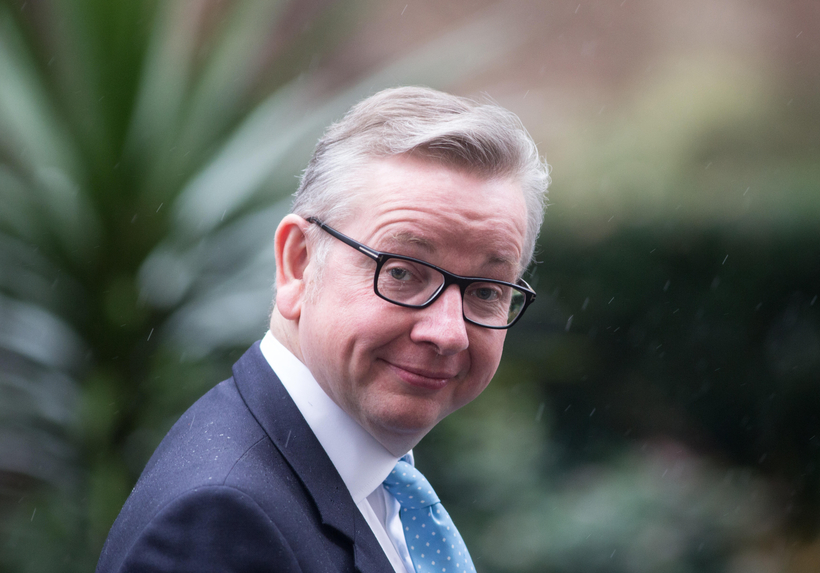Housing secretary Michael Gove has revealed that the government’s plans to expand the “Right to Buy” scheme will be capped.
The policy, which had its heyday under Maragaret Thatcher, allows long-standing local authority tenants to purchase their homes at a heavily discounted price.
Quizzed over whether the government will funnel fresh funding towards the initiative, Gove told Sky News: “It will come from the overall parcel, the overall envelope of government spending at the moment.
“We expect that we will cap the number of people who will be able to benefit from this initially and then it will grow over time.”


However Gove refused to say how many people would be permitted to partake in the plans, telling Sky News: “We are thinking at the moment about exactly how many can benefit each year and that is something that I will be discussing with housing associations because again of course we have the resources to be able to fund a programme of this kind but we want to make sure housing associations come with us and they recognise that their balance sheets are going to be robust.”
“We have costed it but again I don’t want to get into speculation about the exact number,” he added.
This afternoon the prime minister is scheduled to deliver a speech in which he will outline forthcoming housing policies following his narrow victory in Monday’s no-confidence vote.
Charities, housing co-operatives, the Housing Corporation and social landlords not in receipt of public funds are not subject to Right to Buy. A Right to Buy landlord may refuse to sell accommodation that is especially suitable for older people, although this is subject to a time-limited right of appeal.
Right to Buy was introduced in the Housing Act 1980, as one of the first major reforms introduced by the Thatcher government.
The 1970s had seen some local authorities voluntarily sell parts of their housing stock, but the introduction of Right to Buy – forcing local authorities to sell their properties on request at a discount – was highly politically controversial. The Act precipitated a strike by NALGO union members, who refused to process Right to Buy applications. However, in spite of the strike, 90,000 properties were sold in that year.
Labour initially opposed the scheme but abandoned their opposition in 1985.
The policy was seen to be expensive for councils, which were forced to sell their housing stock at below the market rate.
By 2002, many voices were warning that Right to Buy was exacerbating the incipient housing crisis in many areas. The policy was diminishing the stock of affordable housing, making it harder for many to get on to the housing ladder. In 2000-2001, 53,000 homes were transferred under Right to Buy, but only 18,000 new affordable homes were built.
In March 2003, Deputy Prime Minister John Prescott announced that the maximum discount was to be cut in 41 local authority areas in London and the South East.
The Government’s Housing Act, which received Royal Assent in November 2004, included further changes, including the end of the little used Rent to Mortgage.
After winning the 2010 General Election, David Cameron detailed plans to increase Right to Buy discounts in order to revitalise the housing market and generate receipts which could be spent on new housing. Since that time Right to Buy Discounts have increased.
Despite the stated ambition post 2015, to replace right to buy sales, with new replacement housing stock, there is concern that this is not happening in practice. Government statistics in January 2021, revealed that for a total of 41,541 additional Right to Buy sales, which should have been replaced by the end of September 2020 in line the Government’s three-year replacement policy, only 31,661 replacement starts and acquisitions have occurred, leaving a replacement shortfall of 9,980 homes.
Michael Gove insisted earlier today that all homes sold under the freshly expanded scheme will be replaced “like-for-like”.
When it was put to him that the original “Right to Buy” scheme failed to replace many local authority properties it facilitated the sale of, the minister explained to Sky News: “That is a fair point and one of the things that we will be doing is making sure that there is a replacement, a like-for-like, one-for-one replacement.”
Alex Morton, head of policy at centre-right think tank the Centre for Policy Studies, said: “The Right to Buy was one of the most transformative policies of the 20th century, moving millions of people into home ownership. Many of the arguments made against the policy since do not stack up. The government would be right to extend the policy to housing associations to take the opportunity to place greater ownership at the heart of its levelling up agenda, and deliver on the commitments made in the 2015 and 2019 Conservative manifestos.
“Longer term, the government can not only revive the Right to Buy but fully reinvent it for the 21st century by implementing a Right to Own. This would put rocket boosters under home ownership rates whilst protecting tenants and the state coffers.”
Shadow levelling up secretary Lisa Nandy argued that the plans to extend the scheme to housing association tenants could “worsen” the housing crisis.
Speaking to BBC One’s Breakfast programme she explained: “We’ve got a severe shortage of affordable housing in this country, we’ve got a million people on the housing waiting lists. By their own reckoning, this will help a few thousand families a year.
“For those families that will be very welcome, but if it makes the housing crisis worse for everybody else, I’m not sure why they wouldn’t come forward with a proper plan that actually starts to increase the supply of affordable housing, cuts costs for lease holders, which is one of the things that we’re proposing today, and get money back into people’s pockets right now.”












